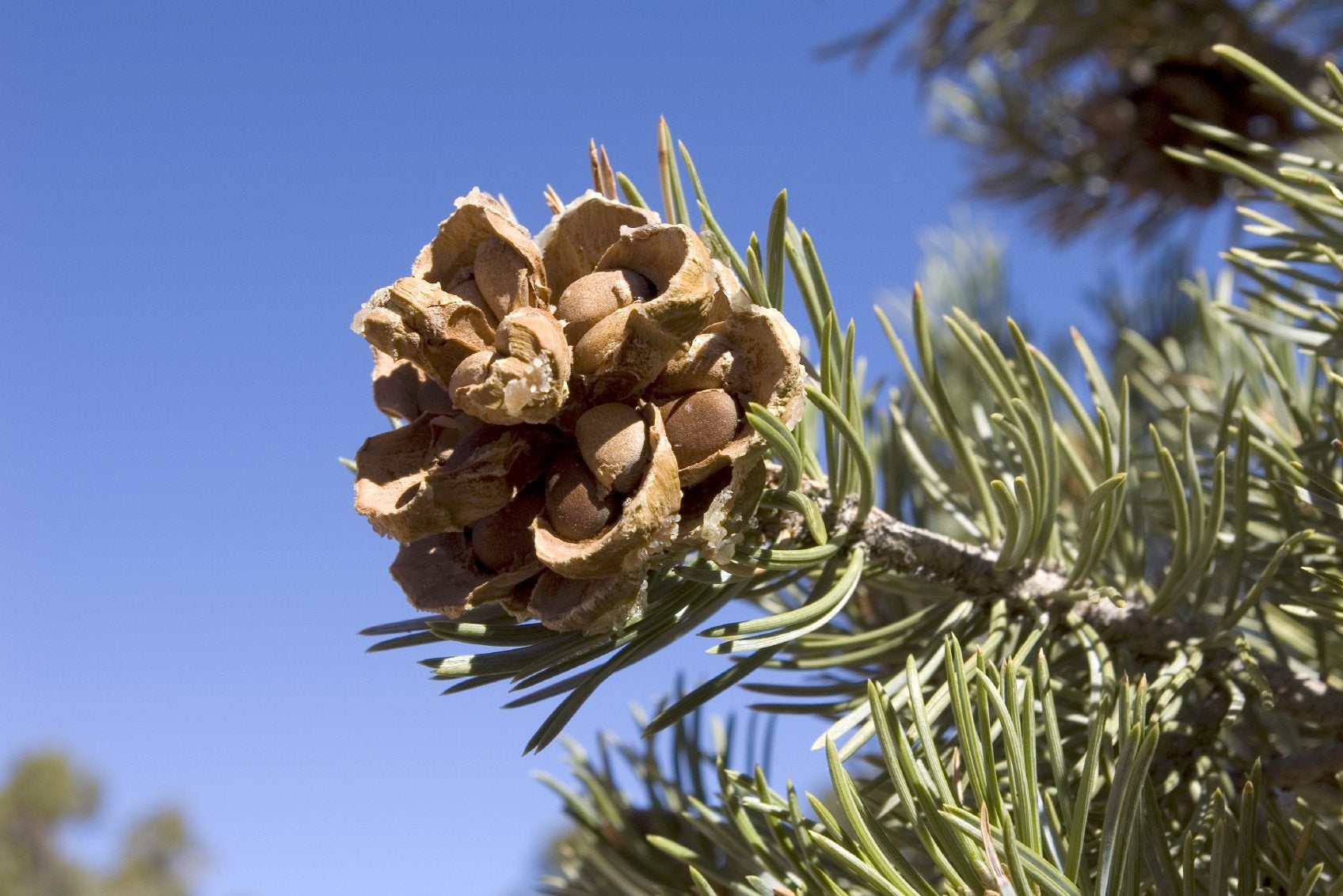Pine Nut Harvesting – When And How To Harvest Pine Nuts


Pine nuts are very expensive when you buy them at the grocery store, but they are hardly new. People have been pine nut harvesting for centuries. You can grow your own by planting a pinyon pine and harvesting pine nuts from pine cones. Read on for more information on when and how to harvest pine nuts.
Where Do Pine Nuts Come From?
Many people eat pine nuts but ask: Where do pine nuts come from? Pine nuts come from pinyon pine trees. These pines are native to the United States, although other pines with edible pine nuts are native to Europe and Asia, like the European stone pine and the Asian Korean pine. Pine nuts are the smallest and the fanciest of all nuts. The taste is sweet and subtle. If you have a pinyon pine tree in your backyard, you can start harvesting pine nuts from pine cones too.
When and How to Harvest Pine Nuts
Pine nuts ripen in late summer or fall, and this is when you start pine nut harvesting. First, you’ll need pine trees with low branches containing both opened and unopened pine cones on them. The opened pine cones indicate that the pine nuts are ripe, but you don’t want these cones when it comes to pine nut harvesting; they have already released their nuts.
The nuts were, most likely, eaten up by animals and birds. Instead, when you are harvesting pine nuts from pine cones, you want to gather closed cones. Twist them off the branches without getting the sap on your hands since it is hard to clean off. Fill the bag with cones, then take them home with you. P
ine cones are built of overlapping scales and the pine nuts are located inside each scale. The scales open when exposed to heat or dryness. If you leave your bag in a warm, dry, sunny location, the cones will release the nuts on their own. This saves time when you are harvesting pine nuts from pine cones.
Wait a few days or even a week, then shake the bag vigorously. The pine cones should be open and the pine nuts slide out of them. Collect them, then remove the shells on each with your fingers.
Gardening tips, videos, info and more delivered right to your inbox!
Sign up for the Gardening Know How newsletter today and receive a free copy of our e-book "How to Grow Delicious Tomatoes".

Teo Spengler is a master gardener and a docent at the San Francisco Botanical Garden, where she hosts public tours. She has studied horticulture and written about nature, trees, plants, and gardening for more than two decades. Her extended family includes some 30 houseplants and hundreds of outdoor plants, including 250 trees, which are her main passion. Spengler currently splits her life between San Francisco and the French Basque Country, though she was raised in Alaska, giving her experience of gardening in a range of climates.
-
 12 Mother’s Day Garden Gifts That Celebrate Moms Who Love To Grow
12 Mother’s Day Garden Gifts That Celebrate Moms Who Love To GrowAll Moms deserve to feel special on Mother’s Day, so treat her to a thoughtful gardening gift that helps her get the most out of her hobby.
By Melanie Griffiths
-
 Never Plant Seedlings Until They Pass These 3 Simple Tests
Never Plant Seedlings Until They Pass These 3 Simple TestsDon't be over-eager to transplant seedlings into the garden before they are ready. These quick and easy checks will help ensure flourishing plants.
By Mary Ellen Ellis
-
 Pinon Nut Information – Where Do Pinon Nuts Come From
Pinon Nut Information – Where Do Pinon Nuts Come FromWhat are pinon nuts and where do pinon nuts come from? The nuts found in the cones of pinon trees are actually seeds, which are highly valued not only by people but by birds and other wildlife. Click here for more pinon nut information and uses.
By Mary H. Dyer
-
 Where Do Pine Nuts Come From: Learn About Growing Pine Nut Trees
Where Do Pine Nuts Come From: Learn About Growing Pine Nut TreesPine nuts are a staple in many indigenous cuisines and have migrated to the United States as a part of our family table. Where do pine nuts come from? Learn more about these nuts and how to grow them in this article.
By Bonnie L. Grant